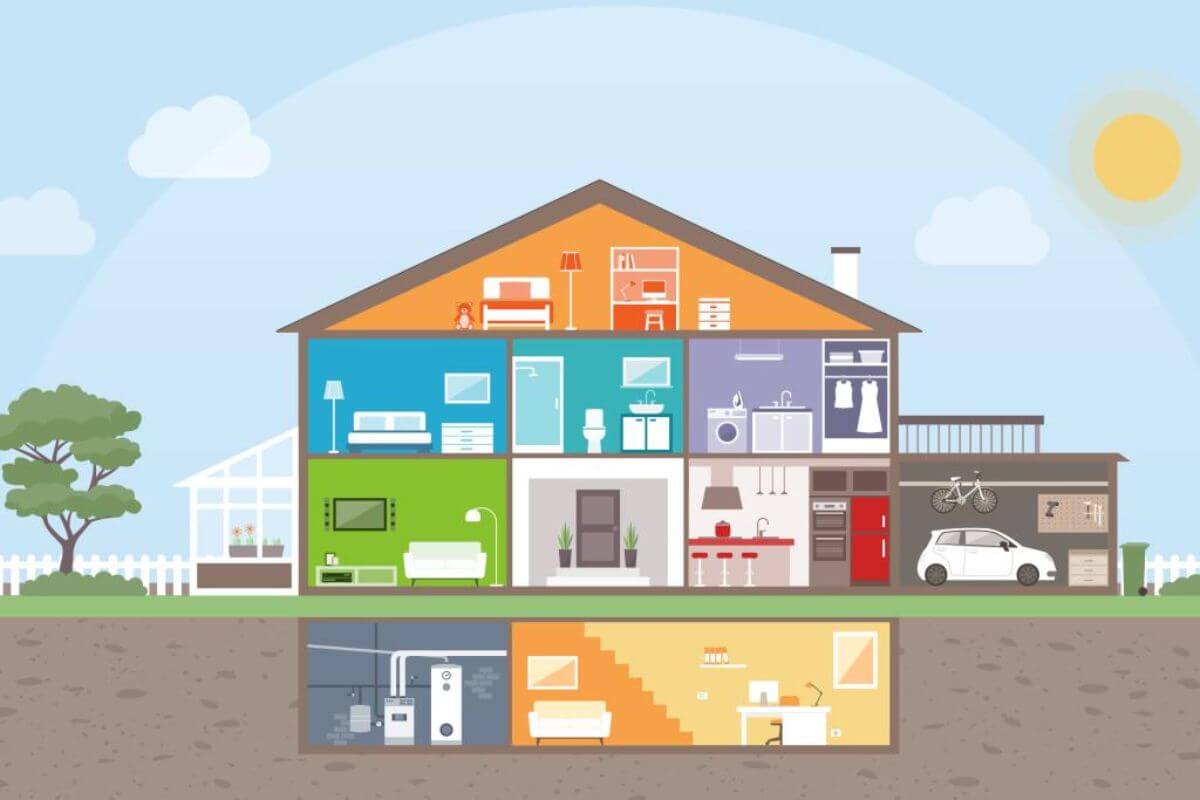When considering additional space for your home, both the attic and the basement present compelling options. Each offers unique advantages and considerations that can significantly impact how you utilize the space. In this comprehensive comparison, we will delve into the key features, benefits, and potential uses of attics and basements, helping you make an informed decision that aligns with your needs and aspirations.
1. Introduction
As your family grows or your lifestyle evolves, the need for additional space within your home becomes apparent. Both the attic and the basement offer the opportunity to expand your living area, but they differ in characteristics and potential uses. By understanding the distinct attributes of these spaces, you can make a well-informed choice that complements your lifestyle and enhances your home.
2. Unveiling the Attic Space
The attic, located beneath the roof of your home, often represents an untapped treasure trove of potential. Attics are characterized by their unique layout and angled ceilings. While they may require modifications to become functional living spaces, attics can offer cozy retreats, offices, or even playrooms.
3. Exploring the Basement Space
Basements are the lower levels of your home, usually located partially or entirely below ground level. They provide a blank canvas for creating diverse living areas. With proper insulation and finishing, basements can be transformed into anything from family rooms and home theaters to gyms and guest suites.
4. Natural Light and Ventilation
Attics typically have fewer windows, which can affect natural light and ventilation. Depending on the design and location of your attic, skylights or dormer windows may be added to improve lighting and airflow. Basements, on the other hand, may have limited natural light due to their lower position. Egress windows and well-placed light fixtures can help brighten basement spaces.
5. Potential Uses of Attics
Attics lend themselves well to spaces that benefit from a sense of privacy and seclusion. They can be transformed into serene bedrooms, artist studios, or home offices. The angled ceilings can add a unique charm, creating a cozy and intimate atmosphere.
6. Potential Uses of Basements
Basements offer a wide array of possibilities due to their size and accessibility. They can serve as entertainment hubs, accommodating home theaters, game rooms, and even mini bars. Additionally, basements are excellent candidates for functional spaces like laundry rooms, storage areas, or workshops.
7. Factors to Consider
When deciding between an attic and a basement, consider factors such as:
- Accessibility: Attics may require modifications like stairs, while basements are usually more accessible.
- Sound: Attics may offer better sound insulation, making them suitable for quiet spaces.
- Temperature: Basements tend to be cooler, making them favorable for activities that require a stable temperature.
- Resale Value: The impact on your home’s resale value can vary based on the region and local housing market trends.
8. Investment and Resale Value
Both attics and basements can add significant value to your home, both in terms of livable space and potential resale value. A well-designed and properly finished attic or basement can attract potential buyers and contribute to a higher selling price.

9. Maintenance and Upkeep
Maintaining both attics and basements requires regular attention. Attics may require insulation upgrades and roof maintenance, while basements may need waterproofing measures and moisture control to prevent issues like mold.
10. Choosing Between Attic and Basement
The decision between an attic and a basement ultimately depends on your preferences, needs, and the existing layout of your home. Consider how you envision using the space, the level of investment you’re willing to make, and how the chosen area aligns with your lifestyle.
11. Expert Tips for Maximizing Space
- Utilize Vertical Space: Install shelves, cabinets, and storage solutions to make the most of available room.
- Multi-Functional Furniture: Opt for furniture that serves dual purposes, such as a sofa bed or an ottoman with storage.
- Lighting Matters: Use well-placed lighting fixtures to brighten up corners and create a welcoming ambiance.
- Color Palette: Choose light and neutral colors to make the space feel more open and spacious.
12. Conclusion
Whether you decide to transform your attic or revamp your basement, both spaces offer boundless potential for enhancing your home’s functionality and appeal. By carefully considering your preferences, needs, and the characteristics of each space, you can embark on a journey to create a versatile and inviting area that perfectly suits your lifestyle.
13. Frequently Asked Questions (FAQs)
Q: Can an attic be converted into a bedroom?
A: Yes, with proper modifications, an attic can be transformed into a cozy and comfortable bedroom.
Q: Are basements suitable for home entertainment setups?
A: Absolutely, basements provide a great setting for home theaters and entertainment rooms.
Q: Can I add windows to my attic for more natural light?
A: Yes, skylights or dormer windows can be added to attics to enhance natural light and ventilation.
Q: Which space requires less renovation: attic or basement?
A: The level of renovation required depends on the existing condition of the space. Both attics and basements may require modifications for optimal use.
Q: Where can I find professionals to help with attic or basement renovations?
A: Connect with local contractors and renovation experts to ensure a successful transformation of your chosen space.



